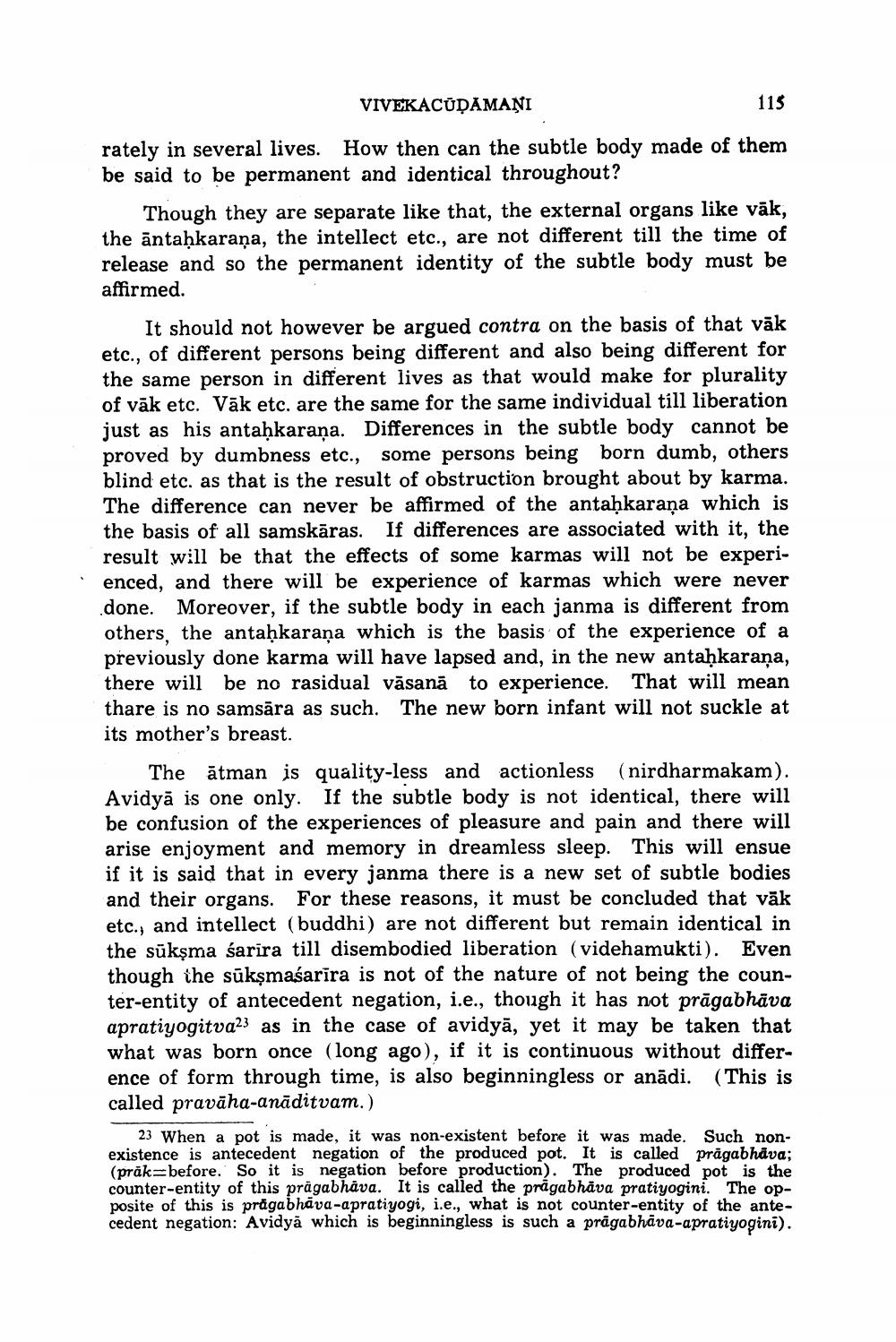________________
VIVEKACŪDAMAŅI
115
rately in several lives. How then can the subtle body made of them be said to be permanent and identical throughout?
Though they are separate like that, the external organs like vāk, the āntahkarana, the intellect etc., are not different till the time of release and so the permanent identity of the subtle body must be affirmed.
It should not however be argued contra on the basis of that vāk etc., of different persons being different and also being different for the same person in different lives as that would make for plurality of vāk etc. Vāk etc. are the same for the same individual till liberation just as his antahkarana. Differences in the subtle body cannot be proved by dumbness etc., some persons being born dumb, others blind etc. as that is the result of obstruction brought about by karma. The difference can never be affirmed of the antahkarana which is the basis of all samskāras. If differences are associated with it, the result will be that the effects of some karmas will not be experienced, and there will be experience of karmas which were never done. Moreover, if the subtle body in each janma is different from others, the antahkaraṇa which is the basis of the experience of a previously done karma will have lapsed and, in the new antahkarana, there will be no rasidual vāsanā to experience. That will mean thare is no samsāra as such. The new born infant will not suckle at its mother's breast.
The ātman is quality-less and actionless (nirdharmakam). Avidya is one only. If the subtle body is not identical, there will be confusion of the experiences of pleasure and pain and there will arise enjoyment and memory in dreamless sleep. This will ensue if it is said that in every janma there is a new set of subtle bodies and their organs. For these reasons, it must be concluded that vāk etc., and intellect (buddhi) are not different but remain identical in the sūkşma sarira till disembodied liberation (videhamukti). Even though the sūksmasarira is not of the nature of not being the counter-entity of antecedent negation, i.e., though it has not prāgabhāva apratiyogitva23 as in the case of avidyā, yet it may be taken that what was born once (long ago), if it is continuous without difference of form through time, is also beginningless or anādi. (This is called pravāha-anāditvam.)
23 When a pot is made, it was non-existent before it was made. Such nonexistence is antecedent negation of the produced pot. It is called prāgabhava; (präkbefore. So it is negation before production). The produced pot is the counter-entity of this prägabhava. It is called the prāgabhava pratiyogini. The opposite of this is pragabhāva-apratiyogi, i.e., what is not counter-entity of the antecedent negation: Avidyā which is beginningless is such a prāgabhāva-apratiyogini).




